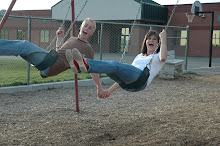 Shakespeare’s original Globe Theatre was built in 1559 to become the home of the Chamberlain-King’s company and the only theatre where they publicly presented in
Shakespeare’s original Globe Theatre was built in 1559 to become the home of the Chamberlain-King’s company and the only theatre where they publicly presented in Construction of the Globe commenced on February 26, 1599 under the supervision of Peter Streete. It is now estimated that the Globe took approximately twenty eight to thirty weeks to complete and it is projected that the opening date was in August or September or 1599. It was officially in use until the year 1613 when it was destroyed by fire on June 29th. It is recorded that the fire was set by a cannon accident during a production of Henry VIII (Brockett 168-169). Despite its short-lived career of only fourteen years, the  Globe became a symbol for drama as a whole, propelling its influence into
Globe became a symbol for drama as a whole, propelling its influence into
At the instigation of the American actor, Sam Wanamaker, a new Globe Theatre was built in the early 90s. Attempting to make it as much like the original as possible, the new theatre was built according to a design based on the historical research of John Orrell (Hornby 633). The Globe was excavated before the building began, but its true dimensions remain unknown. Orrell argues that the Globe was a twenty sided circular building with an exterior diameter of approximately ninety nine feet and a yard diameter of seventy four feet. He estimates that the galleries were twelve and a half feet deep, and that the stage was forty three feet wide and twenty five feet deep. The new theatre is constructed as closely as possible to what is believed to be the original dimensions. It is also built on Bankside, approximately two hundred and twenty five yards from the original site. The new theatre also became the first thatched roof building permitted in
Just as in the original Globe, the reconstructed theatre houses a stage that juts out into a large yard surrounded by three tiers of steep stadium seating. The only covered parts of the theatre are the stage and the seated areas. The theatre is allowed to seat 1600 people according to fire code though far more could fit to stand in the yard. Many have debated the actual originality of the rebuilt Globe. Obviously some modernizations were added, including additional lighting so that shows can be performed at night and sprinklers on the roof to protect against fire and a modern lobby, but holistically it is believed to be almost identical to the original. In his review of the rebuilt Globe, Richard Hornby suggests, that “the restored Globe in
and the seated areas. The theatre is allowed to seat 1600 people according to fire code though far more could fit to stand in the yard. Many have debated the actual originality of the rebuilt Globe. Obviously some modernizations were added, including additional lighting so that shows can be performed at night and sprinklers on the roof to protect against fire and a modern lobby, but holistically it is believed to be almost identical to the original. In his review of the rebuilt Globe, Richard Hornby suggests, that “the restored Globe in
Works Cited
Beckerman, Bernard. Shakespeare and the Globe.
Brockett, Oscar G. History of the Theatre. 7th ed.
Hornby, Richard. "Shakespeare's Globe." The

No comments:
Post a Comment